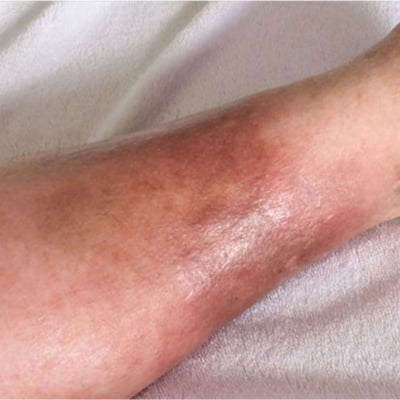 OVERVIEW
OVERVIEW
Having flawless skin is a goal for many people. To achieve the desired skin, most people will not hesitate to spend a lot of money and time on beauty products. Unfortunately, cellulitis can often make the skin look less than perfect.
Cellulitis is a skin infection caused by bacteria. The bacteria enter the skin through a cut, scrape, or other breaks in the skin. It most often occurs in the lower legs and feet but can also appear on the face.
A medical professional can treat Cellulitis using antibiotics, but it can lead to serious health problems such as sepsis or blood poisoning if left untreated.
In the United States, cellulitis affects over 14 million people per year, with most of those cases occurring in adults between 20 and 40 years of age.
Causes: What Leads to Cellulitis?
The most common cause of cellulitis is Streptococcus pyogenes and Staphylococcus aureus, both commonly found on the skin. Other causes of cellulitis include:
- Haemophilus influenza (buccal cellulitis)
- Moraxella catarrhalis (preseptal cellulitis)
Symptoms: What are the Signs and Symptoms of Cellulitis?
Symptoms of cellulitis may include:
- Red, swollen, and painful skin
- Warmth or tenderness in the affected area
- Drainage from the infected area
- Fever
- Chills
- Muscle ache
- Fatigue
Cellulitis most often affects the lower legs but can also occur on other body parts, such as the arms, face, or scalp. The infection can spread to other parts of the body if not treated.
Risk Factors of Cellulitis
The most common risk factors for developing cellulitis include:
- Cut or abrasion on the skin
- Diabetes
- Pregnancy
- Obesity
- Weakened immune system
- Using corticosteroid medications
- Chronic venous insufficiency
- Undergoing dialysis.
Treatment: How Is Cellulitis Treated?
Cellulitis is treated with antibiotics, usually intravenously (by vein) in the hospital. The antibiotics are typically chosen based on culture and sensitivity tests.
Treatment may also include drainage of any abscesses and wound care. If there is extensive damage to the skin, surgery may be necessary to close the wounds.
What is the Outlook of Someone with Cellulitis?
The look of someone with cellulitis depends on the severity of the infection and how quickly it is treated. In most cases, patients make a full recovery with proper treatment.
However, sometimes, it may progress to a more serious infection with long-term complications such as scarring or recurrent infections.
Prevention of Cellulitis
The best way to prevent cellulitis is to:
- Keep your skin clean and dry
- Avoid skin irritants
- Use a barrier cream if you are susceptible to cellulitis (Sunscreen)
- Practice good hygiene
- Avoid excessive moisture
- Cover any cuts or wounds with a bandage or sterile dressing
- Drink plenty of fluids to keep the skin hydrated
- See a doctor if you develop any symptoms of cellulitis.
Skincare is an important part of taking care of your health, and it's something that everyone should do regularly. It can help you look and feel your best, and it can also help prevent health problems. Cellulitis is a very real infection that can be life-threatening if not treated properly. If you think you may have cellulitis, don't let it ruin your life. Seek treatment right away and get back to living your life.


 OVERVIEW
OVERVIEW









